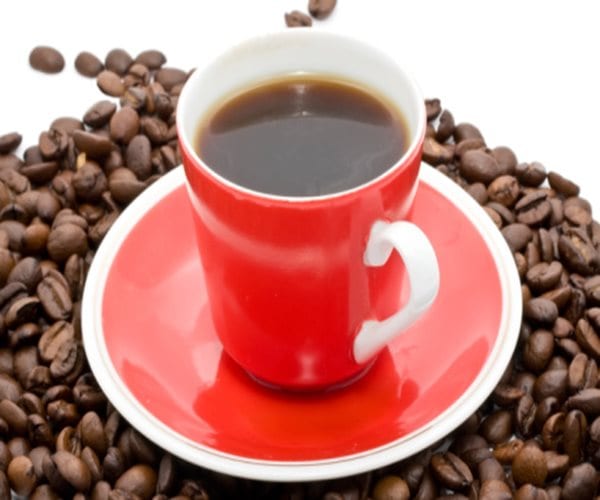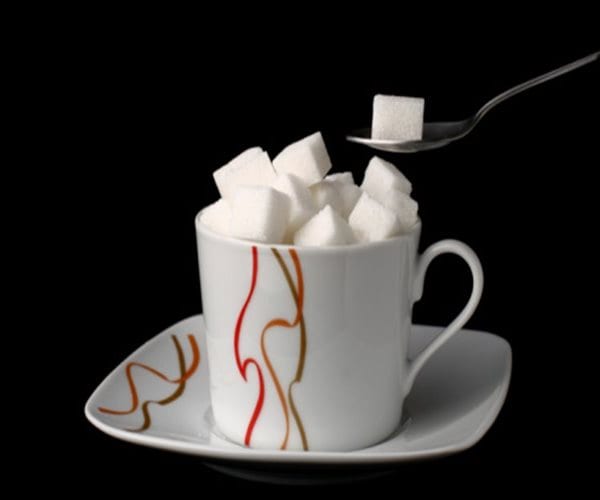Fitness
Back and Spinal Fitness at PUSH as Rx leads the field with a laser focus on supporting our youth sports programs. The PUSH-as-Rx System is a sport-specific athletic program designed by a strength-agility coach and physiology doctor with a combined 40 years of experience working with extreme athletes.
The program is the multidisciplinary study of reactive agility, body mechanics, and extreme motion dynamics at its core. A clear quantitative picture of body dynamics emerges through continuous and detailed assessments of the athletes in motion and under directly supervised stress loads.
Exposure to the biomechanical vulnerabilities is presented to our team. Immediately, we adjust our methods for our athletes to optimize performance. This highly adaptive system with continual dynamic adjustments has helped many of our athletes return faster, stronger, and ready post injury while safely minimizing recovery times.
Results demonstrate clear improved agility, speed, decreased reaction time with greatly improved postural-torque mechanics. PUSH-as-Rx offers specialized extreme performance enhancements to our athletes no matter the age.

by Dr Alex Jimenez DC, APRN, FNP-BC, CFMP, IFMCP | Diets, Fitness
Australian researchers have found that exercising as a child could potentially counteract the damage of a high-fat diet later in life.
Carried out by a team from the Liggins Institute at the University of Auckland, the animal study looked at the effect of different diets and exercise programs on rats’ bone health and metabolism, focusing on the activity of the genes in bone marrow.
Rats were given either a high-fat diet and a wheel for extra exercise, a high-fat diet but no wheel, or a regular diet and no wheel.
High-fat diets in childhood are known to “turn up,” or increase, the activity of other genes that cause inflammation — the body’s natural self-protective response to acute infection or injury. Ongoing inflammation as a result of high-fat diets can damage cells and tissues, increasing the risk of obesity, heart disease, cancer among other conditions.
However, the team found that in the rats given a high-fat diet and an exercise wheel, the early extra physical activity caused inflammation-linked genes to be turned down, not turned up.
It appeared that exercise altered the way the rats’ bones metabolized energy from food, disrupting the body’s response to a high-calorie diet.
“What was remarkable was that these changes lasted long after the rats stopped doing that extra exercise — into their mid-life,” commented Dr Justin O’Sullivan, a molecular geneticist at the Institute.
“The bone marrow carried a ‘memory’ of the effects of exercise. This is the first demonstration of a long-lasting effect of exercise past puberty.”
“The rats still got fat,” he pointed out, “but that early extra exercise basically set them up so that even though they put on weight they didn’t have the same profile of negative effects that is common with a high fat diet.”
Dr O’Sullivan says that the results may help explain why even though obesity and diabetes are often linked, not everyone who is obese develops diabetes.
“It also strongly emphasizes the health benefits of exercise for children.”
The team are now carrying out further research, varying the exercise and looking at the even longer-term effects into old age in the hope of recreating their results.

by Dr Alex Jimenez DC, APRN, FNP-BC, CFMP, IFMCP | Diets, Fitness
While too much fat, especially of the “bad” variety, can lead to weight gain and health problems, a moderate amount of fat is essential to a healthy lifestyle.
Adding a little fat to your food, either through cooking or drizzling over salads, can help to fill you up and feel more satisfied after a meal, as well as boost health by helping the body absorb several fat-soluble vitamins.
However, with the recent news that coconut oil, long believed to be a “healthy” fat, should actually be avoided, many of us may be wondering once again which fats are the good ones.
Here we round up some advice from the University of Kentucky on which oils to keep on hand in the kitchen, and which to avoid.
Canola oil
This oil is the lowest in saturated fat, just 7 percent, while also containing high levels of monounsaturated fatty acids, which lower LDL and in recent years have been studied for potentially helping control blood glucose.
This oil is great for stir-frying, grilling, and replacing many solid fats — the ones to avoid — in recipes.
Olive oil
An important ingredient in the popular and healthy Mediterranean diet, olive oil is well-known for its many health benefits, including lower risk of death from cardiovascular disease and a reduced level of inflammation in the body.
Use extra-virgin and virgin olive oils for uncooked dishes, like salads, and choose refined olive oils for cooking as they are better at higher temperatures.
Peanut oil
High in monounsaturated (good) fat, peanut oil also contains vitamin E, an antioxidant that helps maintain a strong immune system, healthy skin and eyes, and helps with the formation of red blood cells.
Thanks to a high smoke point, this oil is ideal for frying, roasting and grilling.
Avocado oil
This oil is also high in monounsaturated fats and vitamin E, and also has a tasty but mild flavor, making it great to add cold onto salads.
It also has a high smoke point for those who prefer to cook with it. However, if avocado oil is too expensive or difficult to find, canola oil makes a good budget-friendly alternative.
And the oils to avoid
Saturated or “solid fats” should be consumed sparingly — these are the oils that are solid at room temperature such as coconut oil, butter, palm oil, beef tallow, and lard.
Because saturated fat contributes to a rise in the level of LDL cholesterol, also known as “bad” cholesterol, the AHA recommends that saturated fat should make up a maximum of 10 percent of total caloric intake for healthy Americans, and a maximum of 6 percent for those who need to lower cholesterol levels.

by Dr Alex Jimenez DC, APRN, FNP-BC, CFMP, IFMCP | Diets, Fitness
Coffee addicts and aficionados often say drinking the bitter liquid makes life worth living, but the habit may also help them live longer, according to two major international studies Monday.
Experts cautioned, however, that the US and European reports, published in the Annals of Internal Medicine, failed to show that coffee was truly the reason that many drinkers appeared to have longer lives.
Rather, the studies were observational in nature, meaning they showed an association between coffee-drinking and a propensity toward longevity, but stopped short of proving cause and effect.
The first study, led by the International Agency for Research on Cancer (IARC) and Imperial College London, examined more than half a million people across 10 countries in Europe.
Those who drank about three cups a day tended to live longer than non-coffee drinkers, said the study, which researchers described as the largest analysis of the effects of coffee-drinking in a European population.
“We found that higher coffee consumption was associated with a lower risk of death from any cause, and specifically for circulatory diseases, and digestive diseases,” said lead author Marc Gunter of the IARC, formerly at Imperial’s School of Public Health.
“Importantly, these results were similar across all of the 10 European countries, with variable coffee drinking habits and customs.”
The second study included more than 180,000 participants of various ethnic backgrounds in the United States.
It found benefits to longevity whether the coffee was caffeinated or decaffeinated.
Coffee drinkers had a lower risk of death due to heart disease, cancer, stroke, diabetes, and respiratory and kidney disease.
Those who drank one cup a day were 12 percent less likely to die compared to those who didn’t drink coffee.
Those who drank two or three cups per day saw an even higher 18 percent reduced risk of death.
“We cannot say drinking coffee will prolong your life, but we see an association,” said lead author Veronica Setiawan, an associate professor of preventive medicine at the Keck School of Medicine of University of Southern California.
“If you like to drink coffee, drink up! If you’re not a coffee drinker, then you need to consider if you should start.”
Coffee is one of the most popular drinks in the world. Some 2.25 billion cups are consumed every day.
Many prior studies have hailed the benefits of coffee-drinking, saying the beverage imparts anti-oxidants, may improve liver function and reduce inflammation.
But coffee may carry risks for some people, and pregnant woman and children are urged to avoid caffeine, which can be fatal in high doses.
A report from the IARC last year that said drinking very hot beverages — coffee, tea or otherwise — is one probable cause of cancer of the esophagus, the tube that runs from the throat to the stomach.
Experts who were not involved in the latest studies urged caution in interpreting the results.
For instance, the European study excluded people who had cancer, heart disease or diabetes, meaning it took a measure of people over 35 who were already generally healthy.
It also asked about coffee consumption just once, at the beginning, and did not update this figure over the span of the study, which included an average follow-up time of 16 years.
Finally, it found signs of a link between women who drank large amounts of coffee and a higher risk of cancer death, but downplayed this finding, saying it “may be spurious.”
The “conclusions will not lead me to start drinking coffee or to recommend people drink more coffee as a way to lessen their risks for heart disease,” said Naveed Sattar, professor of metabolic medicine at the University of Glasgow.
“I remain unconvinced that the link between coffee and heart disease represents a true cause and effect relationship and that coffee is truly protective, regardless of how large a study suggests this.”
Sattar said that one downside to the research is the fact that many people stop drinking coffee — or drink less of it — when they are ill, a “bias is very hard to fully overcome.”
David Spiegelhalter, a professor at the University of Cambridge, described the research as “huge in size and carefully done,” but nevertheless unable to prove cause and effect.
“If these estimated reductions in all-cause mortality really are causal, then an extra cup of coffee every day would on average extend the life of a man by around three months, and a woman by around a month,” he added.
“So perhaps we should relax and enjoy it.”

by Dr Alex Jimenez DC, APRN, FNP-BC, CFMP, IFMCP | Diets, Fitness
Americans love dining out al fresco when the summer weather is so perfect. But don’t let restaurant food throw a monkey wrench into your healthy eating plan. Dining establishments can be ticking time bombs when it comes to sabotaging your nutrition.
In fact, government surveys say that that the food you typically eat when you are not at home is nutritionally worse in every way than your own kitchen fare.
“Eating out can be challenging, but shouldn’t limit your social life,” Dr. Craig Title, a top New York City weight loss specialist tells Newsmax Health. “Here are some tips I share with my clients.”
Be prepared. Like a good scout, select your meal options before you get to the restaurant by checking the menu online. “You’ll make a more level-headed, healthier choice,” says Title.
Eat a little beforehand. Don’t arrive at the restaurant famished. Make sure you have eaten a small meal or two earlier in the day.
Nix the bread. Instruct the wait staff NOT to bring out the bread and butter basket. “Out of sight, out of mind,” says Title. “Ask for celery and carrots sticks instead.”
Drink water. Down one full glass of water as soon as you are seated to help you feel fuller sooner, which will make you eat less.
Ask for it your way. Dining out is not the time to be a meek consumer, notes Dr. Michael F. Jacobson, Ph.D., executive director of the Center for Science in the Public Interest (CSPI) and coauthor of the book, “Restaurant Confidential.” His advice: “You need to be assertive and asked for your food to be prepared they way you’d like it and very often the restaurant will comply.” For example, choose grilled fish over fried and extra veggies instead of French fries.
Go for healthier fare. Order from the “light” or “low fat” section of the menu. Many chains, even Chinese restaurants, offer lighter fare with nutritional info on the menu.
Make salad more than a side. Order a salad with lemon juice or balsamic vinegar and treat it as a first course, before you eat anything else. Scientists at Pennsylvania State University found that people who ate a big green or veggie salad before their entree consumed fewer calories.
Order double appetizers. This is especially rewarding when you’re dining at a seafood restaurant with sumptuous starters. An appetizer order of oysters on the half shell and another of steamed shrimp makes a complete and low-calorie meal along with your salad.
Avoid high-calorie dressings. Keep your salads tasty but healthy by shunning anything in a creamy high-calorie sauce and using raw or marinated vegetables, like artichoke hearts and mushrooms, for extra flavor. Skip the cheese and bacon bits, too.
Do the fork dip. Keep your salad dressing on the side and dip your fork into the dressing before skewering a forkful of salad. This makes the lettuce taste great and you won’t soak the greens in dressing.
Have the fish. When CPSI evaluated food served at seafood chains and independent restaurants they found many low-fat and low-sodium options on the menu. Just don’t order it fried. Stick to steamed, baked, broiled and blackened or grilled.
Read the fine print. Pay attention to words like “breaded, crisp, sauced or stuffed” as these indicate loads of hidden calories, much of it saturated or even trans-fats. Other words of caution are, “butter, pan-fried, Newburg, Thermidor, and cheese sauce.”
Limit alcohol. Instead drink soda or seltzer water. Enjoy one glass of wine or beer with your meal and order coffee or tea for dessert.
Skip the fancy drinks. Pass over the umbrella specials such as margaritas and Mai Tais and other exotic mixed drinks as they are chock full of sugar. Opt instead for a glass of vodka, wine, a light beer or a simple martini if you must imbibe.
Choose fruit for dessert. Title suggests sharing the finale with your date. Fresh fruit, like strawberries or blueberries, during the hot summer months makes an excellent dessert without any guilt.
“Most importantly, enjoy your food,” says Title. “Chew slowly and take time between bites. Focus on the occasion and the people you are dining with, rather than just the meal.”

by Dr Alex Jimenez DC, APRN, FNP-BC, CFMP, IFMCP | Diets, Fitness, Integrative Functional Wellness, Integrative Medicine
Is coconut oil a metabolism-boosting superfood or an artery-clogging threat to heart health?
That question has fueled a raging debate for many years, and it was reignited in mid-June when the American Heart Association (AHA) issued an advisory reiterating its longstanding recommendation to avoid saturated fats. Attention quickly focused on coconut oil, which has become trendy in natural health circles despite its high saturated fat content.
Proponents of coconut oil say its medium-chain triglycerides are quickly burned for energy, increasing metabolism. Coconut oil fats are also said to be good for the brain, which is made mostly of fat, and help regulate blood sugar and, ironically, cholesterol levels.
But the AHA advisory contends that all saturated fats raise risk of cardiovascular disease.
“Taking into consideration the totality of the scientific evidence…we conclude strongly that lowering intake of saturated fat and replacing it with unsaturated fats, especially polyunsaturated fats, will lower the incidence of cardiovascular disease,” states the advisory.
The AHA researchers specifically advise against using coconut oil, which they note is 82 percent saturated fat and raises “bad” LDL cholesterol levels, “a cause of atherosclerosis.”
But many other scientific reviews in recent years — including one meta-analysis encompassing nearly 350,000 people followed for as long as 23 years — found no link between saturated fat and heart disease.
“Those reviews were much more limited because they didn’t take into consideration what the substitution [for saturated fats in the diet] was,” explains Dr. Alice Lichtenstein, co-author of the AHA advisory. “The better reviews that looked at replacing saturated fat with either carbohydrates or mono- or polyunsaturated fats, show clear differences.”
Many natural health practitioners take exception to the AHA conclusions, including integrative cardiologist Dr. Jack Wolfson. He contends that AHA researchers cherry-picked data from decades-old studies, and that branding all LDL as harmful is outdated science.
“Total LDL numbers are a very poor prognosticator of heart disease,” says Wolfson, a doctor of osteopathy and board-certified cardiologist based in Phoenix, Ariz. “What’s more relevant is LDL particle size and numbers. Small, dense particles are bad for the heart, but studies show that large fluffy particles, like those promoted by coconut oil, cause no harm.”
But Lichtenstein, director of the Cardiovascular Nutrition Laboratory at Tuft University’s Human Nutrition Center on Aging, dismisses the LDL particle size factor, saying, “There’s much more written on the Internet about that than data to support it.”
Wolfson further questions AHA recommendations to use “highly processed” vegetable oils, saying their omega-6 fatty acids can contribute to systematic inflammation. In an AHA newsletter, the advisory’s lead author, Dr. Frank Sacks, suggests that people forsake butter and coconut oil for cooking and use canola, corn, soybean, and extra virgin olive oil instead.
“There’s nothing wrong with deep frying as long as you deep fry in a nice unsaturated vegetable oil,” Sacks adds.
That suggestion may send shudders through natural health practitioners, who widely contend that vegetable oils break down into harmful compounds under high heat.
“Coconut oil has a high smoke point, which makes it more stable for cooking,” explains Wolfson. “Unsaturated vegetable oils oxidize through the cooking process and cause oxidative stress and inflammation in the body.”
Lichtenstein once again cites a lack of data on the adverse effect of cooking with vegetable oils, telling Newsmax Health, “It’s not a concern.”
Wolfson also points out that the evolving science of heart disease seems to be shifting away from cholesterol and more toward inflammation as the primary cause.
“The risk of a cardiovascular event – heart attack, stroke and dying — is much higher when you have inflammation,” says Wolfson, author of “The Paleo Cardiologist: The Natural Way to Heart Health” and advocate of eating diets similar to our caveman ancestors.
“Coconut oil doesn’t cause inflammation. Sugar, artificial ingredients, pesticide residue in food…these are the types of things that cause inflammation.”
He emphasizes that it’s important to eat healthy saturated fats that are organic and, if animal-based, come from grass-fed pasture-grazers. Wolfson adds that he has history on his side in the debate over whether they are healthy or harmful.
“Our ancestors ate saturated fats for millions of years,” he tells Newsmax Health. “Why would evolution make it plug up our pipes and kill us? People in the South Pacific have diets that are more than 50 percent coconut-based, and they have virtually no heart disease. If we were all on a deserted island eating coconuts, fish and vegetables, and getting plenty of sunshine and sleep, heart disease would be a non-issue.”

by Dr Alex Jimenez DC, APRN, FNP-BC, CFMP, IFMCP | Diets, Fitness
Did you know that flavored yogurt in the United States has a lot more sugar than it does in other countries? That’s because our national sweet tooth is out of control. And the more sugar we eat, the more we want.
Studies show that replacing sweet foods with sugar-free versions doesn’t help. Artificial sweeteners don’t satisfy a sugar craving.
The answer is to reset your taste buds for less sugar. According to research published in the American Journal of Clinical Nutrition, you can do this over a short amount of time, just as it’s possible to reduce a desire for salt.
Cut back on the amount of sweets you eat every day, but do it gradually. Some experts say going cold turkey can lead to a binge later on. Resist temptation by limiting the cookie and candy stash in your kitchen cabinets. Add fruit to your diet — you’ll be getting nutrients along with the sweetness, something processed sugar won’t give you.
Begin your day with a nourishing breakfast that includes protein. Buy unsweetened foods like plain yogurt, plain rolled oats, and 100 percent whole grain cereal, and sweeten them yourself. Just a sprinkle is all you need. Don’t start the sugar cycle with a donut or pastry.
Finally, exercise. Research has found that, in addition to health benefits, exercise starts a chain reaction that lowers your desire for unhealthy, high-calorie foods.
Making better choices will help you break the sugar cycle. You’ll be satisfied with low-sugar foods and appreciate sweets more as occasional treats.

by Dr Alex Jimenez DC, APRN, FNP-BC, CFMP, IFMCP | Diets, Fitness
Sen. Charles Schumer is urging federal regulators to look into a “snortable chocolate” powder, saying he’s worried that it could prove harmful and is being marketed like a drug.
In a letter Saturday, the New York Democrat asked the Food and Drug Administration to investigate the use of caffeine in inhalable food products such as so-called Coco Loko. It’s gotten buzz in recent weeks.
Schumer, the Senate minority leader, says there are too many unanswered questions about a product pitched under the innocent-sounding name of chocolate.
“This suspect product has no clear health value,” he said in a statement. “I can’t think of a single parent who thinks it is a good idea for their children to be snorting over-the-counter stimulants up their noses.”
Marketed as “raw cacao snuff,” Coco Loko includes cacao powder, which comes from beans used in making chocolate; they contain some caffeine. Manufacturer Legal Lean Co. doesn’t detail other ingredients online, but according to news reports, Coco Loko also includes common energy-drink ingredients.
It promises feelings of well-being, mental focus, ecstasy-like euphoria and a rush of “motivation that is great for partygoers to dance the night away without a crash,” according to Orlando, Florida-based Legal Lean’s website. It notes that the claims haven’t been vetted by the FDA.
The agency has said it hasn’t yet determined whether it has authority to regulate snortable chocolate.
Legal Lean Co., which sells Coco Loko online for $19.99 for a 1.25-ounce (3.5-gram) tin, did not return a call seeking comment. Founder Nick Anderson has said he didn’t consult any medical professionals but believes Coco Loko is safe. He said he developed it from snortable chocolate that’s circulated in Europe in recent years.
“There’s really no negative publicity, so I felt we’re good to go,” he told ABC’s “Good Morning America” on Thursday.
Doctors have said they’re not certain what the effects of inhaling chocolate might be.







